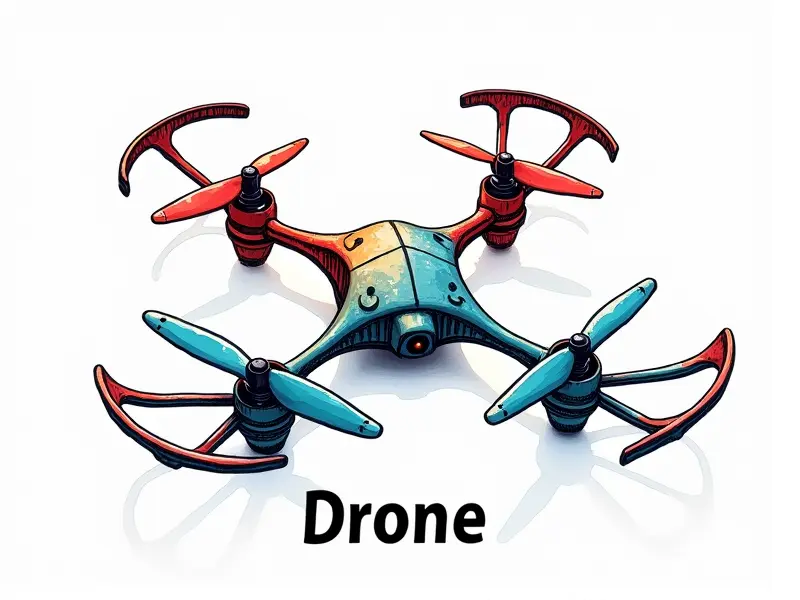Walker drone specs?

Ultimate Guide to Walker Drone Specs
Welcome to the ultimate guide on walker drone specifications. This comprehensive article will delve into the key technical details, performance metrics, and features that define top-tier walker drones in 2025.
Key Specs for Optimal Walker Drone Performance
To ensure your walker drone operates at its best, it's crucial to understand several critical specifications:
- Battery Capacity: A high-capacity battery ensures longer flight times and sustained performance.
- Motor Power: Strong motors provide the necessary thrust for efficient movement across various terrains.
- Sensor Technology: Advanced sensors enhance stability, obstacle detection, and navigation accuracy.
Top Walker Drone Features Revealed
The most sought-after features in walker drones today include:
- Autonomous Navigation: Equipped with sophisticated AI algorithms for seamless movement without manual control.
- Versatile Mounting Options: Allows users to attach cameras, sensors, and other accessories for diverse applications.
- Durable Construction: Robust materials ensure longevity and resilience against environmental factors.
Essential Specs for FPV Walker Drones
First-person view (FPV) walker drones have unique requirements to deliver an immersive experience:
- High-Resolution Cameras: Clear, detailed visuals are crucial for real-time viewing.
- Low Latency Transmission: Ensures smooth video feed without delays or interruptions.
- Built-in GPS Tracking: Keeps the drone within a designated area and returns it to base automatically if needed.
Walker Drone Specifications Simplified
Navigating through technical jargon can be daunting. Here’s a breakdown of key specs in simpler terms:
- Battery Life (mAh): Measures the drone's endurance before needing to recharge.
- Flight Time (minutes): Indicates how long the drone can operate on a single charge.
- Weight Capacity (grams): Specifies the maximum load the drone can carry while maintaining stability.
Understanding Walker Drone Technical Details
Diving deeper into technical aspects reveals:
- Servo Motor Specifications: Determines the speed and torque of movement.
- Propeller Design: Influences aerodynamic performance and efficiency.
- Frame Material: Affects durability, weight, and overall structural integrity.
Walker Drone Tech Breakdown 2025
The latest advancements in walker drone technology include:
- Semiconductor Integration: Enhanced processing power for real-time data analysis.
- Battery Management Systems (BMS): Optimizes battery performance and longevity.
- Advanced Thermal Management: Keeps components cool during prolonged use, preventing overheating.
Walker Drone Capabilities: A Quick Guide
A quick overview of what modern walker drones can do:
- Terrain Adaptability: Navigates through rugged terrains with ease.
- Multi-rotor Stability: Maintains balance and control in windy conditions.
- High-Speed Mobility: Capable of rapid movement for dynamic applications.
Key Specs to Look for in Walker Drones
When shopping for a walker drone, consider these important specifications:
- Maximum Speed (mph): Reflects the drone's top speed and agility.
- Range (feet/meters): Indicates how far the drone can fly from its controller.
- Operating Temperature Range: Specifies the environmental conditions under which the drone functions optimally.
Top Specs for Walker Drones Today
The most desirable specifications in today’s market are:
- Fully Autonomous Operation: Capable of navigating and performing tasks without human intervention.
- Haptic Feedback Controllers: Provides tactile feedback to enhance control precision.
- Integrated AI for Object Recognition: Identifies objects in real-time, enhancing navigation accuracy.
Walker Drone Performance Metrics
Evaluating the performance of walker drones involves assessing several key metrics:
- Airtime Efficiency (minutes per charge): Measures how effectively the drone uses its battery capacity.
- Acceleration Rate (seconds to max speed): Indicates the responsiveness and agility of the drone.
- Stability in Windy Conditions: Tests the drone's ability to maintain control under adverse weather conditions.
Conclusion
The world of walker drones is rapidly evolving, with new technologies enhancing performance and versatility. By understanding key specifications such as battery capacity, motor power, sensor technology, and advanced features like autonomous navigation and FPV capabilities, you can make an informed decision when choosing the right drone for your needs.

